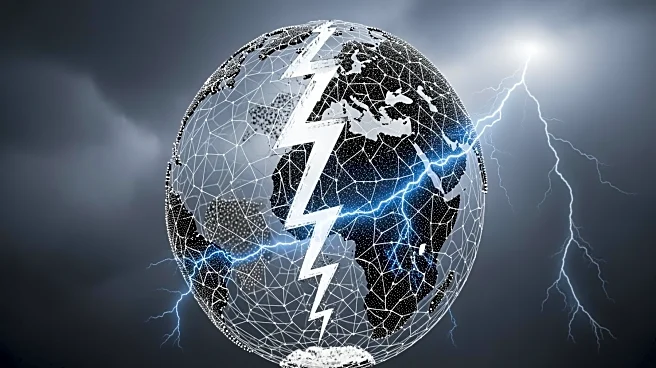What's Happening?
Amazon Web Services (AWS) experienced a significant global outage early Monday morning, affecting numerous popular websites and apps. The disruption impacted services such as Amazon, Snapchat, Facebook,
Delta Air Lines, and United Airlines in the U.S., as well as banking services in the U.K. AWS reported increased error rates and latencies across its services, particularly in the US-EAST-1 Region. The root cause was identified as an internal subsystem responsible for monitoring network load balancers. By 6:01 p.m. ET, AWS announced that all services had returned to normal operations.
Why It's Important?
The outage highlights the critical role AWS plays in the infrastructure of many major online services and businesses. The disruption affected social media, gaming, airlines, and financial services, demonstrating the widespread reliance on AWS for cloud computing. This incident underscores the vulnerability of digital services to technical failures and the potential impact on business operations and customer access. Companies relying on AWS may need to reassess their contingency plans to mitigate future risks.
What's Next?
Amazon engineers have resolved the immediate issue, but the incident may prompt businesses to evaluate their dependency on AWS and consider diversifying their cloud service providers. Stakeholders, including affected companies and AWS, might engage in discussions to improve system resilience and response strategies. The outage could lead to increased scrutiny of AWS's infrastructure and operational protocols to prevent similar occurrences.
Beyond the Headlines
The outage raises questions about the concentration of digital infrastructure in the hands of a few major providers like AWS. It may spark debates on the need for more distributed and resilient cloud services to ensure stability and security. Additionally, the incident could influence regulatory discussions on the oversight of cloud service providers and their role in critical digital infrastructure.











